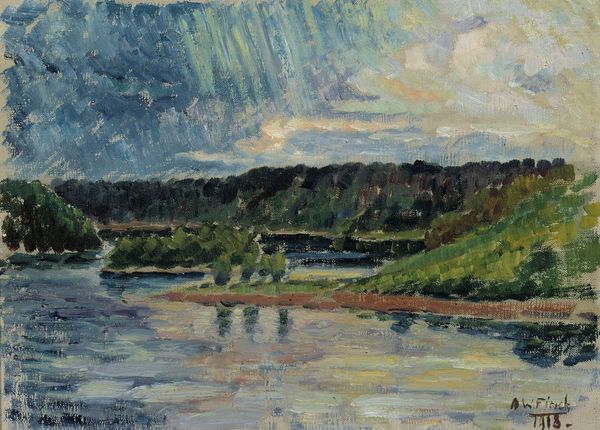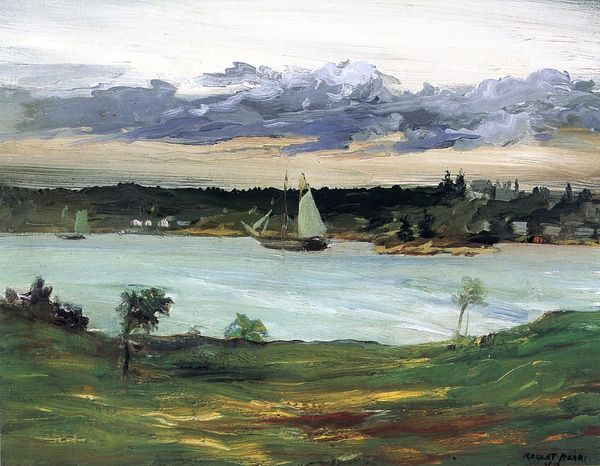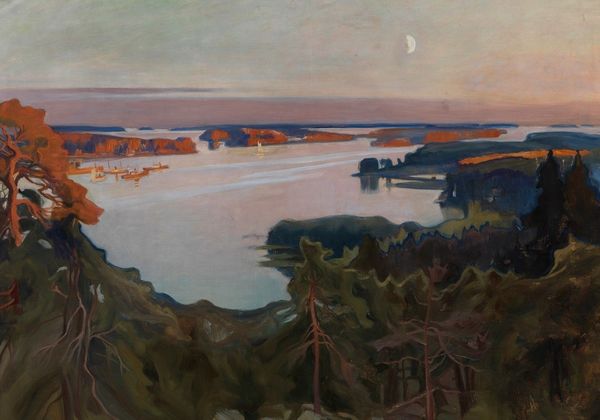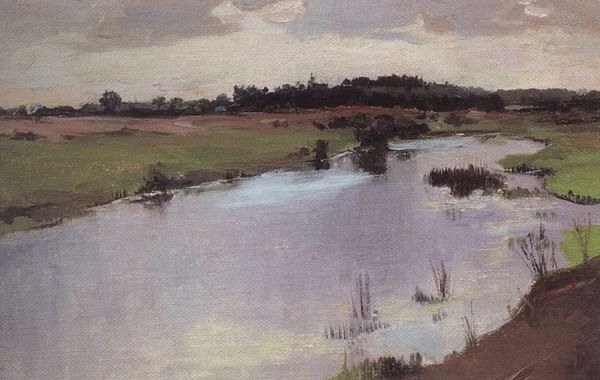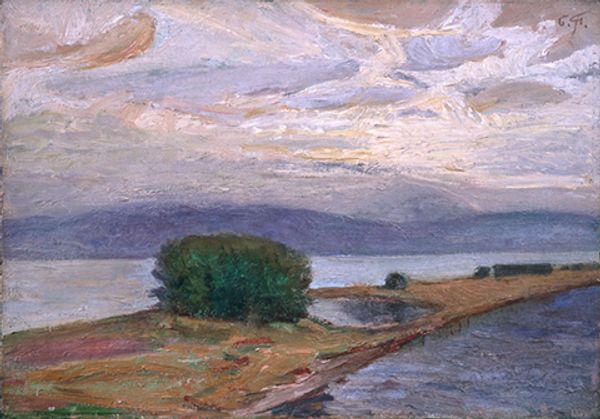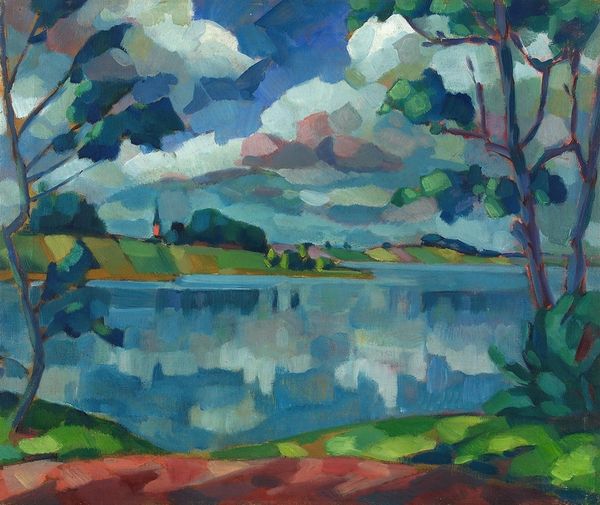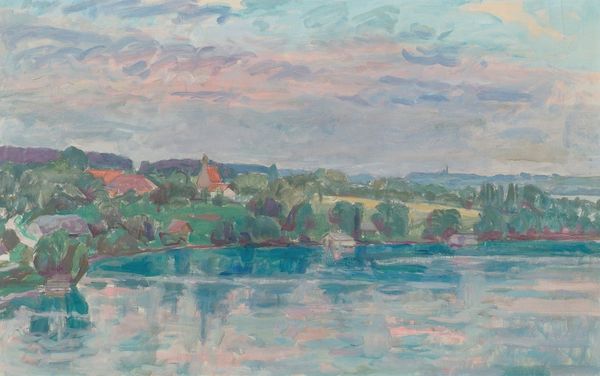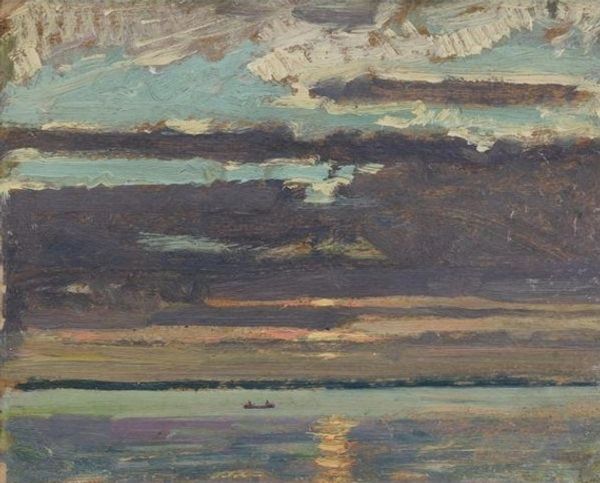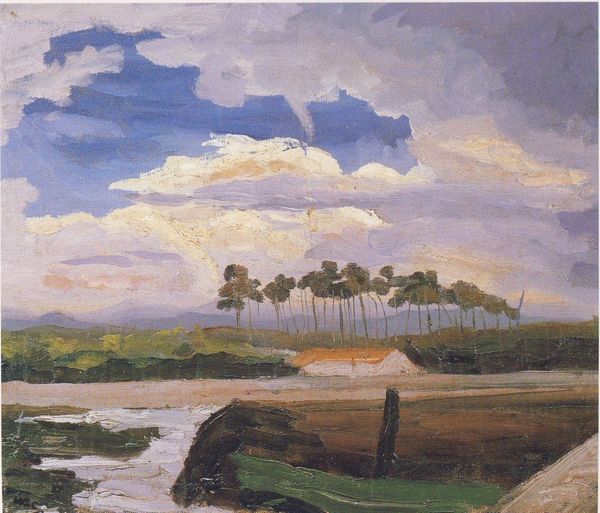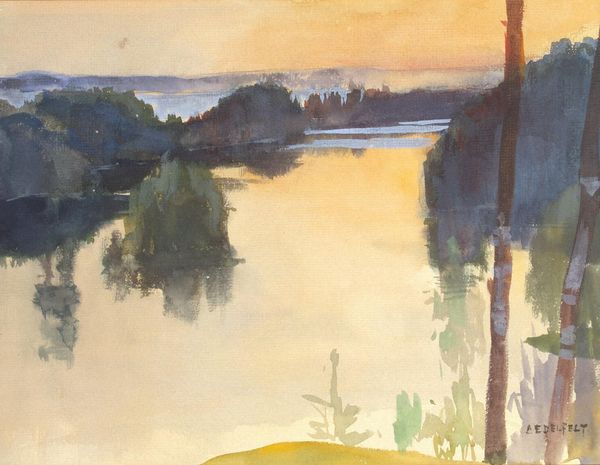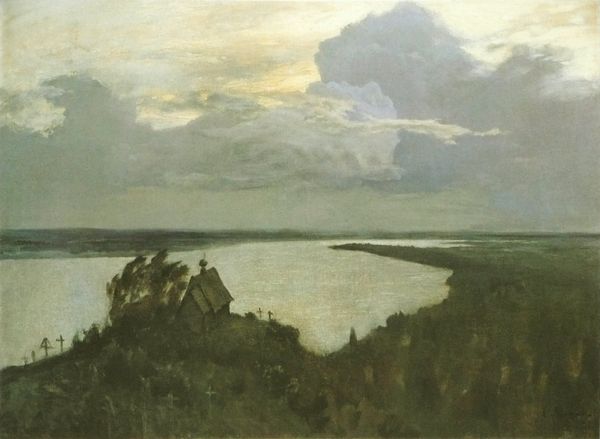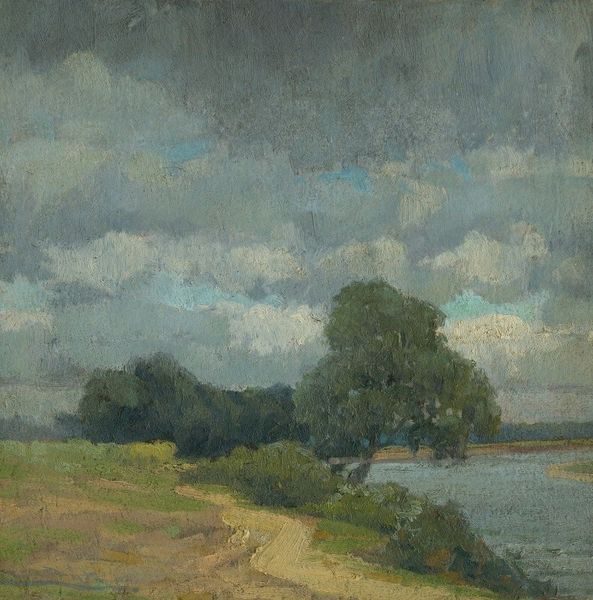
Copyright: Public domain
Curator: Looking at "Neva before the storm," painted by Arkady Rylov in 1916, what strikes you first? Editor: The mood, certainly. There's this intense stillness, an almost suffocating tension in the air rendered by the dominant purples and the way the clouds hang heavy over the water. The light is incredibly dramatic. Curator: Indeed. Rylov was working within a tradition of Russian landscape painting, especially one infused with Romanticism. The interplay of nature's power and human vulnerability was a common theme. Do you feel this work upholds or subverts this? Editor: I think it's complicated. There is a nod towards the sublimity of nature. That lone boat suggests the frailty of humankind when confronted by something bigger. However, the colour palette—those brooding violets—inject a kind of psychological weight, more aligned with modernist sensibilities that reflects anxieties that predate revolution. It speaks to a Russia on the verge, pregnant with the tensions of change. Curator: That's an interesting intersection of the personal, the political and the stylistic. I see what you mean; it could also represent how social turmoil was becoming an inescapable feature in art representation. We see him moving away from social realism toward the psychological realm. I wonder how the impending revolution impacted how artists worked and saw themselves in public life. Editor: Absolutely. The canvas acts as a conduit of political unrest through landscape, not as a literal portrayal. If anything, its continued popularity over the decades might reflect both artistic brilliance and an ongoing appeal to these themes during times of hardship. I love to see such works continue in galleries so everyone has the option of reflecting on it for themselves. Curator: Considering Rylov's later work and legacy, revisiting this painting offers new meanings regarding his positionality as an artist both within and outside the Revolution. Editor: Absolutely, it leaves me thinking about how we constantly renegotiate meaning across art and society.
Comments
No comments
Be the first to comment and join the conversation on the ultimate creative platform.
